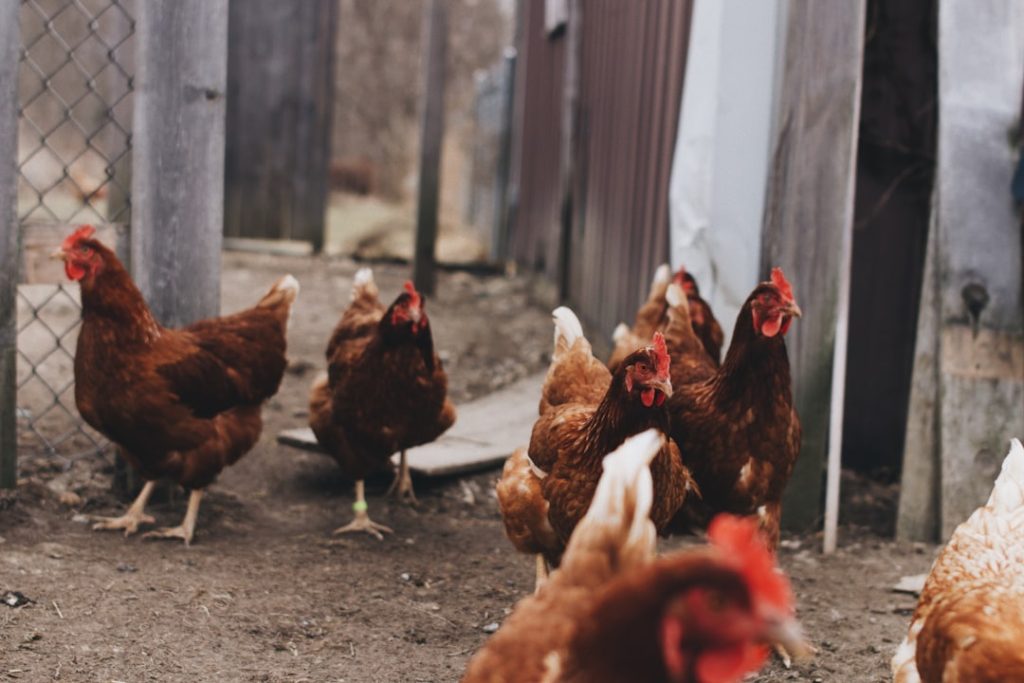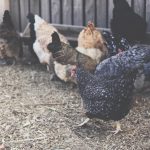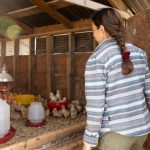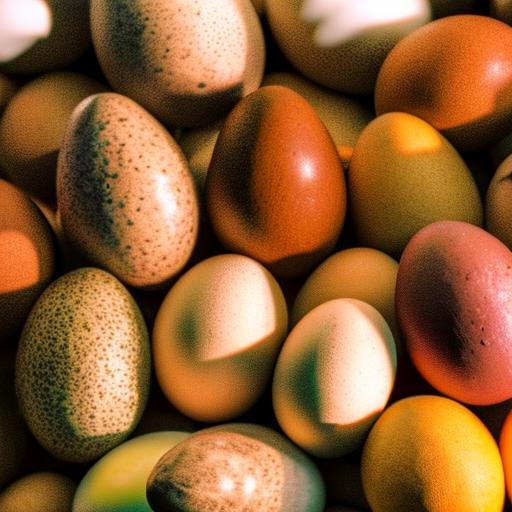Orpington chickens are a popular breed renowned for their friendly and docile nature, making them an excellent choice for backyard chicken enthusiasts. Developed in the 1880s in Orpington, Kent, England by William Cook, these chickens were bred as a dual-purpose breed for both meat and egg production. Orpingtons come in several color varieties, including black, blue, buff, and white, each with distinct aesthetic appeal.
Characterized by their fluffy feathers and round, plump bodies, Orpingtons are visually appealing additions to any flock. They are known for their broodiness, making them excellent mothers and ideal for hatching and raising chicks. Their calm temperament and attractive appearance have contributed to their popularity among poultry enthusiasts worldwide.
Orpington chickens are notable for their large size and gentle disposition. They are cold-hardy, adapting well to various climates. Their friendly nature makes them suitable for family flocks, as they typically interact well with children and other pets.
Orpingtons are adept at free-range environments, demonstrating good foraging abilities and an inclination to explore their surroundings. The breed’s striking appearance, combined with its gentle demeanor, has solidified its status as a beloved choice among poultry enthusiasts and backyard chicken keepers. Orpingtons’ dual-purpose utility for both egg and meat production, coupled with their adaptability and pleasant temperament, continues to make them a popular breed in various poultry-keeping contexts.
Table of Contents
- 1 Selecting the Right Breeding Stock
- 2 Understanding the Breeding Process
- 3 Creating Ideal Breeding Conditions
- 4 Caring for Orpington Chicks
- 5 Health and Genetic Considerations
- 6 Tips for Successful Orpington Chicken Breeding
- 7 FAQs
- 7.1 What is the Orpington chicken breed?
- 7.2 What are the different varieties of Orpington chickens?
- 7.3 What are the key considerations when breeding Orpington chickens?
- 7.4 What is the average lifespan of Orpington chickens?
- 7.5 How can I improve the genetics of my Orpington flock through breeding?
- 7.6 What are some common health issues to watch out for when breeding Orpington chickens?
Key Takeaways
- Orpington chickens are a popular breed known for their friendly nature and beautiful appearance, making them a great choice for backyard breeders.
- When selecting breeding stock, it’s important to choose birds with good health, strong genetics, and desirable traits such as feather color and body shape.
- Understanding the breeding process involves knowing when and how to introduce the breeding pair, as well as recognizing signs of successful mating and egg fertilization.
- Creating ideal breeding conditions includes providing a comfortable and safe environment for the breeding pair, as well as ensuring proper nutrition and access to clean water.
- Caring for Orpington chicks involves providing warmth, proper nutrition, and protection from predators, as well as monitoring their growth and development closely.
Selecting the Right Breeding Stock
Physical Characteristics
When selecting breeding stock, look for birds that exhibit the breed standard characteristics, such as a broad, deep body, a short, well-rounded back, and a low stance. The feathers should be soft and abundant, with a full, fluffy appearance.
Color Variety and Health
Additionally, pay attention to the color variety you are working with and select birds that display the desired color traits. It’s also important to choose breeding stock that is free from any genetic defects or health issues to ensure the overall health and vitality of the offspring.
Temperament and Egg-Laying Abilities
When selecting breeding stock, it’s essential to consider the temperament of the birds as well. Look for individuals that are calm, friendly, and easy to handle, as these traits are often passed down to their offspring. Observing the behavior of potential breeding stock can give you valuable insight into their temperament and overall disposition. Additionally, consider the egg-laying abilities of the hens in your breeding stock. Select birds that consistently lay large, well-formed eggs with good shell quality to ensure the production of strong and healthy chicks.
Understanding the Breeding Process
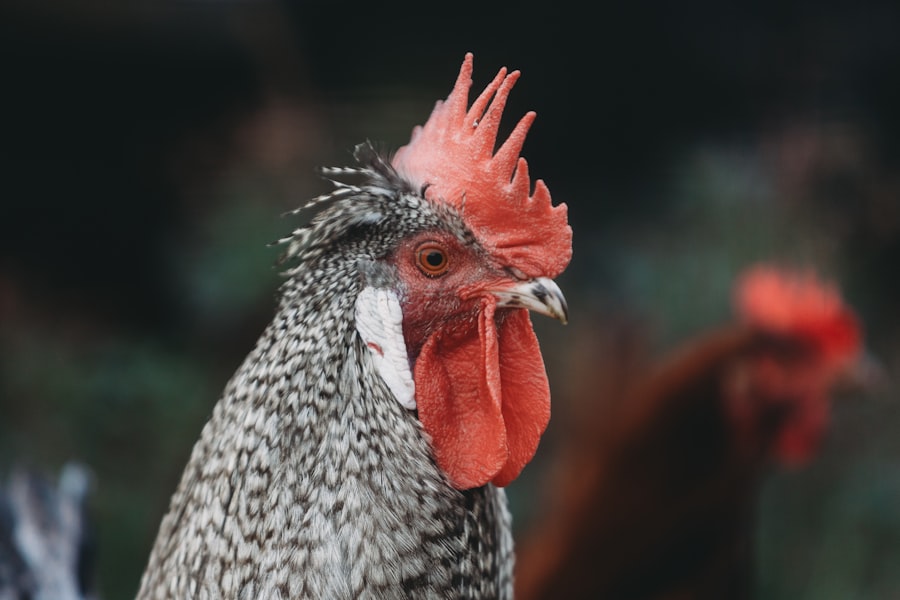
Understanding the breeding process is essential for successfully breeding Orpington chickens. Orpingtons are known for their broodiness, which means they have a strong instinct to sit on and hatch eggs. This natural behavior can be advantageous for those looking to hatch chicks without the need for an incubator.
When breeding Orpington chickens, it’s important to understand the basics of mating behavior and egg fertilization. Roosters should be introduced to hens in a controlled manner to ensure successful mating and fertilization of eggs. Observing mating behavior can help determine which hens have been successfully bred and are likely to produce fertile eggs.
Once eggs have been laid and fertilized, it’s important to provide proper nesting boxes and conditions for broody hens to incubate their eggs. This may involve providing a quiet and secluded area for broody hens to sit on their eggs undisturbed. Alternatively, if artificial incubation is preferred, it’s important to understand the basics of operating an incubator and maintaining proper temperature and humidity levels for successful egg development.
Understanding the breeding process from mating behavior to egg fertilization and incubation is crucial for producing healthy and viable Orpington chicks.
Creating Ideal Breeding Conditions
Creating ideal breeding conditions is essential for successful Orpington chicken breeding. Providing a clean and spacious coop or breeding area is crucial for maintaining the health and well-being of breeding stock. Ensure that the coop is well-ventilated and free from drafts to prevent respiratory issues and promote overall health.
Additionally, providing ample nesting boxes with clean bedding will encourage hens to lay eggs in a suitable environment. It’s important to regularly clean nesting boxes and remove any soiled bedding to maintain optimal hygiene. Maintaining a balanced diet is also crucial for breeding stock to ensure they are in prime condition for successful breeding.
Provide a high-quality layer feed that is rich in essential nutrients such as protein, calcium, and vitamins to support egg production and overall health. Additionally, offering access to fresh water at all times is essential for keeping breeding stock hydrated and healthy. Creating ideal breeding conditions involves providing a clean and comfortable living environment, a balanced diet, and access to fresh water to support the health and well-being of breeding stock.
In addition to physical conditions, it’s important to consider the social dynamics within the flock when breeding Orpington chickens. Introducing new birds or mating pairs should be done gradually to minimize stress and potential conflicts within the flock. Providing adequate space and resources such as feeders and waterers can help reduce competition and promote harmonious interactions among breeding stock.
By creating ideal breeding conditions that prioritize cleanliness, nutrition, hydration, and social dynamics, you can set the stage for successful Orpington chicken breeding.
Caring for Orpington Chicks
Caring for Orpington chicks requires attention to detail and proper management practices to ensure their health and well-being. Once hatched, chicks should be kept in a warm and draft-free brooder with access to fresh water and chick starter feed. Maintaining proper temperature levels in the brooder is crucial for keeping chicks warm and comfortable during their early days of life.
Providing a heat source such as a heat lamp or brooder heater can help maintain optimal temperature levels for young chicks. In addition to warmth, it’s important to monitor the health of Orpington chicks closely during their early days of life. Look for signs of illness or distress such as lethargy, abnormal droppings, or respiratory issues, and take prompt action if any concerns arise.
Providing a clean and hygienic environment is essential for preventing disease and promoting overall health. Regularly clean the brooder bedding and provide fresh water and feed to support the growth and development of Orpington chicks. As Orpington chicks grow, they will eventually transition from the brooder to an outdoor coop or run.
It’s important to provide a safe and secure environment with access to fresh air, natural light, and ample space for exercise and exploration. Introducing chicks to outdoor environments gradually can help them acclimate to their new surroundings while minimizing stress. Caring for Orpington chicks involves providing warmth, monitoring health closely, maintaining cleanliness, and gradually transitioning them to outdoor living spaces as they grow.
Health and Genetic Considerations
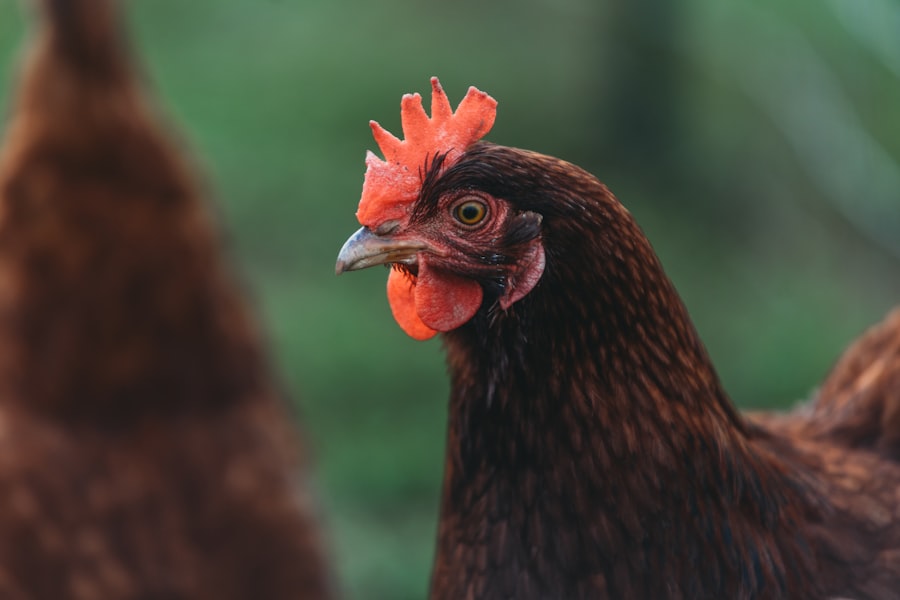
Health Considerations
When breeding Orpington chickens, it’s essential to prioritize health factors to ensure the production of strong and healthy offspring. Selecting breeding stock that is free from genetic defects or hereditary health issues is crucial for preventing potential health problems in offspring. Regular health checks on breeding stock can help identify any underlying health issues that may impact their ability to produce healthy offspring.
Genetic Principles
Understanding basic genetic principles, such as inheritance patterns and gene expression, is vital for making informed decisions when selecting breeding stock and planning matings. By grasping genetic considerations such as color genetics or traits related to egg production or meat quality, breeders can work towards producing offspring that exhibit desired characteristics.
Vaccination Protocols
Maintaining proper vaccination protocols is essential for preventing disease outbreaks within the flock. Consult with a poultry veterinarian to develop a vaccination schedule tailored to the specific needs of Orpington chickens based on regional disease risks and environmental factors. By prioritizing health and genetic considerations, breeders can work towards producing offspring that are strong, healthy, and genetically sound.
Tips for Successful Orpington Chicken Breeding
Successfully breeding Orpington chickens requires careful planning, attention to detail, and dedication to maintaining high standards of care for breeding stock and offspring alike. Here are some tips for successful Orpington chicken breeding: 1. Select high-quality breeding stock that exhibits breed standard characteristics, good health, temperament, and egg-laying abilities.
2.
Provide ideal breeding conditions by maintaining a clean coop or breeding area, offering a balanced diet rich in essential nutrients, providing access to fresh water at all times, and managing social dynamics within the flock.
3. Understand the basics of the breeding process from mating behavior to egg fertilization and incubation.
4. Care for Orpington chicks by providing warmth in a draft-free brooder, monitoring health closely, maintaining cleanliness, and gradually transitioning them to outdoor living spaces as they grow.
5.
Consider health and genetic factors when selecting breeding stock and planning matings to ensure the production of strong and healthy offspring.
6. Consult with a poultry veterinarian to develop a vaccination schedule tailored to the specific needs of Orpington chickens based on regional disease risks.
7. Stay informed about best practices in poultry husbandry and seek guidance from experienced breeders or poultry organizations when needed.
By following these tips for successful Orpington chicken breeding, enthusiasts can work towards producing healthy offspring while preserving the unique characteristics of this beloved breed. In conclusion, breeding Orpington chickens can be a rewarding endeavor for poultry enthusiasts who appreciate their gentle nature, striking appearance, and dual-purpose capabilities. By selecting high-quality breeding stock, understanding the breeding process, creating ideal breeding conditions, caring for Orpington chicks, considering health and genetic factors, and following tips for successful breeding practices, enthusiasts can work towards producing strong and healthy offspring while contributing to the preservation of this beloved breed within the poultry community.
If you’re interested in breeding Orpington chickens, you may also want to consider the interior design of your chicken coop. This article provides some great ideas for creating a comfortable and functional living space for your chickens. A well-designed coop can contribute to the overall health and well-being of your flock, making it a worthwhile investment for any chicken breeder.
FAQs
What is the Orpington chicken breed?
The Orpington chicken breed is a large, dual-purpose breed known for its friendly temperament, excellent meat quality, and good egg-laying capabilities. It was developed in the 1880s in England by William Cook.
What are the different varieties of Orpington chickens?
Orpington chickens come in several color varieties, including buff, black, blue, and white. Each variety has its own unique characteristics and appearance.
What are the key considerations when breeding Orpington chickens?
When breeding Orpington chickens, it’s important to select healthy, high-quality breeding stock with desirable traits such as good conformation, temperament, and egg-laying abilities. Additionally, proper housing, nutrition, and care are essential for successful breeding.
What is the average lifespan of Orpington chickens?
Orpington chickens have an average lifespan of 8-10 years, although this can vary depending on the individual bird’s health and living conditions.
How can I improve the genetics of my Orpington flock through breeding?
To improve the genetics of your Orpington flock, it’s important to carefully select breeding stock with desirable traits and avoid inbreeding. Additionally, implementing a structured breeding program and keeping detailed records can help track and improve the genetic traits of your flock over time.
What are some common health issues to watch out for when breeding Orpington chickens?
Some common health issues to watch out for when breeding Orpington chickens include respiratory infections, parasites, and reproductive disorders. Regular health checks, proper nutrition, and a clean living environment can help prevent and manage these issues.
Meet Walter, the feathered-friend fanatic of Florida! Nestled in the sunshine state, Walter struts through life with his feathered companions, clucking his way to happiness. With a coop that’s fancier than a five-star hotel, he’s the Don Juan of the chicken world. When he’s not teaching his hens to do the cha-cha, you’ll find him in a heated debate with his prized rooster, Sir Clucks-a-Lot. Walter’s poultry passion is no yolk; he’s the sunny-side-up guy you never knew you needed in your flock of friends!

